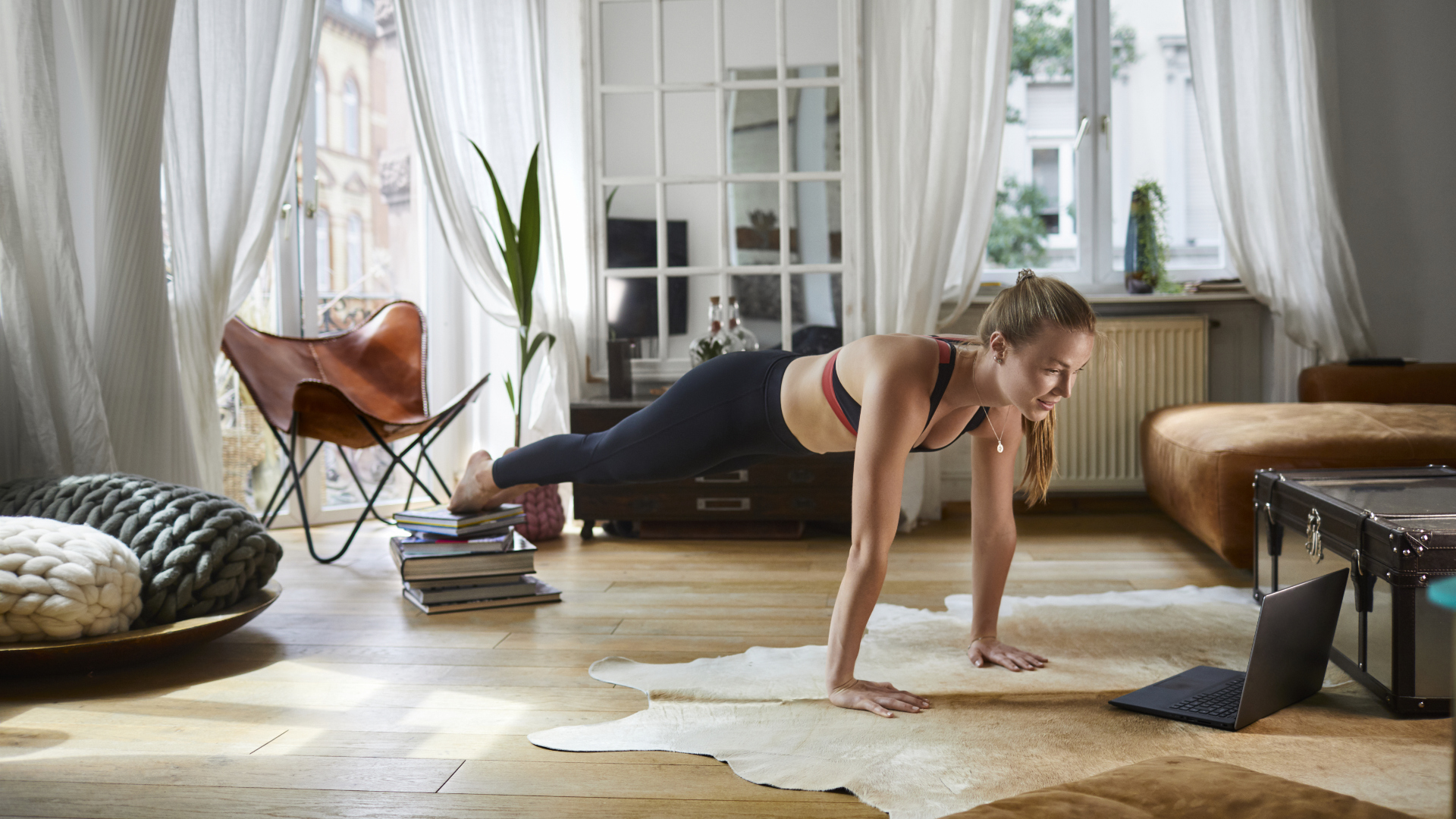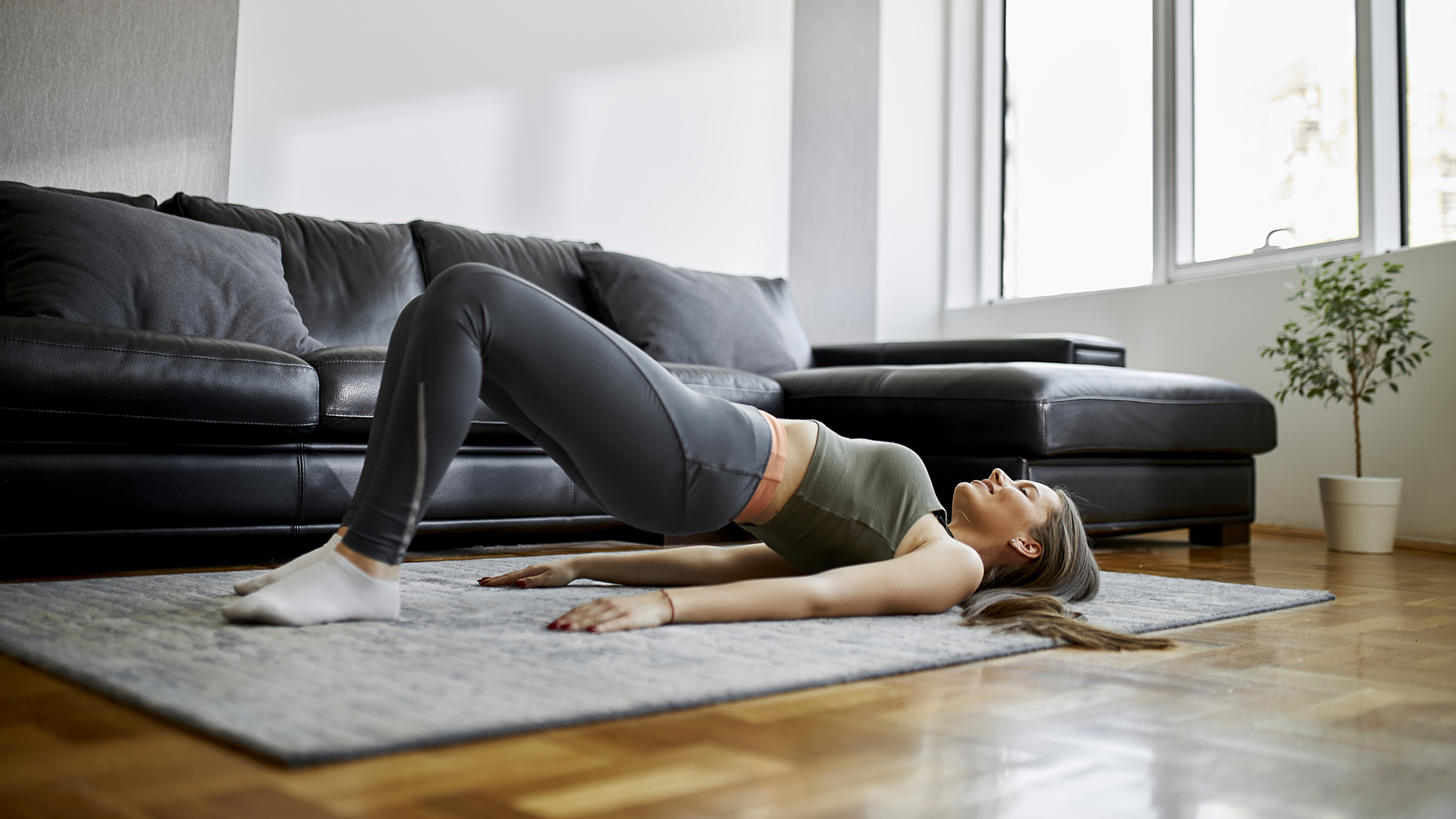


Running and strength training might not sound like a match made in heaven, but runners can benefit from incorporating strength training workouts in their sessions. Here, we'll discuss the benefits of strength training for runners as well as provide what we think is the best strength training plan for runners; barbells and weight plates are strictly optional!
There are a number of different resistance training options for runners. Despite what you might think, you don't need expensive adjustable dumbbells or multi-gyms to strengthen your muscles at home – you can use small home weights, resistance bands, or even your own body weight to increase strength and improve muscle definition.
What are the benefits of strength training for runners?
The most often associated benefit of resistance training is increased muscle mass, which is the ultimate goal for many exercisers, especially bodybuilders. However, frequent strength training has more than just this one benefit. Research claims that resistance training "may enhance cardiovascular health by reducing resting blood pressure, decreasing low-density lipoprotein cholesterol and triglycerides, and increasing high-density lipoprotein cholesterol."
Resistance training can also help strengthen your bones. The same research mentions above says that strength training may promote bone development, with studies showing a 1% to 3% increase in bone mineral density. An often-quoted study also suggests that strength training improves joint health and resilience, which might reduce the risk of injuries.

Do I need any equipment?
Runners don't necessarily have to build a full home gym to improve strength at home. Sure, some home gym equipment might help, but it's not essential. The kit you might need you should already have, such as a foam roller or a few resistance bands. Here, we'll focus on exercises that can be performed with as little equipment as possible. Often, the best strength exercises for runners are bodyweight moves.

How often should runners do strength workouts?
Runners will always prioritise running over strength training, which is understandable. After all, you want to become a better runner and must follow a running training plan to achieve that. Therefore, your strength training should complement your running training and not vice versa.
In season, you're likely to run 5-6 days a week, so we'd recommend doing 1-2 strength training sessions considering the overall workout load. Many of the best running watches and best multisport watches can estimate workout load and training readiness. This can help you gauge your readiness to exercise, even if you can't determine this yourself. It's easy to overdo training and get ill in the process.
Sign up to the T3 newsletter for smarter living straight to your inbox
Get all the latest news, reviews, deals and buying guides on gorgeous tech, home and active products from the T3 experts
Off-season, we'd recommend ramping up strength training sessions to 2-3 times a week, along with some lighter running training. We'd also recommend including more non-running activities in your plan, such as cycling, swimming or even stand-up paddle boarding. This will help your muscles recover for the next season without losing power/strength.
Best strength training plan for runners
The training plan below is a full-body workout because, as a runner, you must improve overall strength and not just leg power. Besides, doing only leg exercises and running will put a lot of pressure on your lower body, which might result in injury.
Instead, we'll focus on critical areas most runners complain about when they run: the core, hamstrings, trapezius muscle, glutes and more. Full-body workouts have many benefits; most importantly, especially from a runner's point of view, they are very time-efficient.
By performing compound exercises – the ones that use multiple muscle groups simultaneously – you can build strength and power without adding too much bulk, which is crucial, as more muscle means more weight that needs carrying around.
Try not to spend too much time doing the workout; half an hour of strength training a day is more than long enough for runners. You can perform the below exercises as a circuit (40 seconds on, 20 seconds off) or as sets and reps (3-4 sets of as many repetitions as it feels comfortable but challenging).
Squats
If you do one exercise, do squats. This deceivingly easy-looking exercise is one of the best ways to build overall strength and works the biggest muscle in your body, the glutes. You can do it weighted or without any weights, using your body weight only to provide resistance.
A couple of important things to remember: go as deep as you can without putting too much pressure on the knees. As you descend, pay attention to your hips and feet, and note any imbalances or pain points. Don't rush the squats; a slow, controlled motion is best for muscle development.
High plank
The plank is an isometric exercise that can significantly improve core strength. Your core consists of your abs, obliques and the muscles surrounding your lower back. Many runners ignore this area, but most can benefit from a stronger core, especially those who run for longer (e.g., marathons).
High planks are also ideal for improving shoulder strength and can enhance glute activation. When doing the plank, squeeze the muscle in the middle of your body and hold the pose as long as possible. Once you can comfortably hold the plank for a minute, try switching things up by introducing plank variations like the Commando.
Romanian deadlift (RDL)
Another extremely important area for runners is the hamstrings. If you've ever run a marathon, you know that hamstrings can cramp quite easily. Strengthening them can alleviate the symptoms proactively.
Romanian deadlifts are also called stiff-legged deadlifts, as during the exercise, you keep your legs straight and extend your body using the glutes and the hamstrings. Focus on holding your back straight and not bending forward too much – that might injure your back. Use a resistance band or a couple of larger water/milk bottles if you haven't got home weights.
Farmer's carry
Some runners swing their arms more than others, but all runners will use their upper limbs to some degree as they move forward, hence why training your trapezoid muscles is so important. The farmer's carry is an amazing compound exercise that loads the trapezoids and strengthens your grip – two in one!
You will need some weights for this exercise, but if you haven't got any, use a couple of backpacks full of food items (e.g. rice, pasta, etc.); that could also work. If you want to increase the resistance, do some shrugs with the weights to stimulate the trapezoids even more.
Weighted lunges
Weighted lunges are excellent not just in their ability to increase quadriceps power but also to improve hip mobility and hamstring flexibility. Sandbags are probably the ideal weight for this kind of exercise, but any weights you can hold in your hand will do. Try going as deep as you can, but if you're feeling any discomfort in your knees, reduce the slightly.


Matt Kollat is a journalist and content creator who works for T3.com and its magazine counterpart as an Active Editor. His areas of expertise include wearables, drones, fitness equipment, nutrition and outdoor gear. He joined T3 in 2019. His byline appears in several publications, including Techradar and Fit&Well, and more. Matt also collaborated with other content creators (e.g. Garage Gym Reviews) and judged many awards, such as the European Specialist Sports Nutrition Alliance's ESSNawards. When he isn't working out, running or cycling, you'll find him roaming the countryside and trying out new podcasting and content creation equipment.